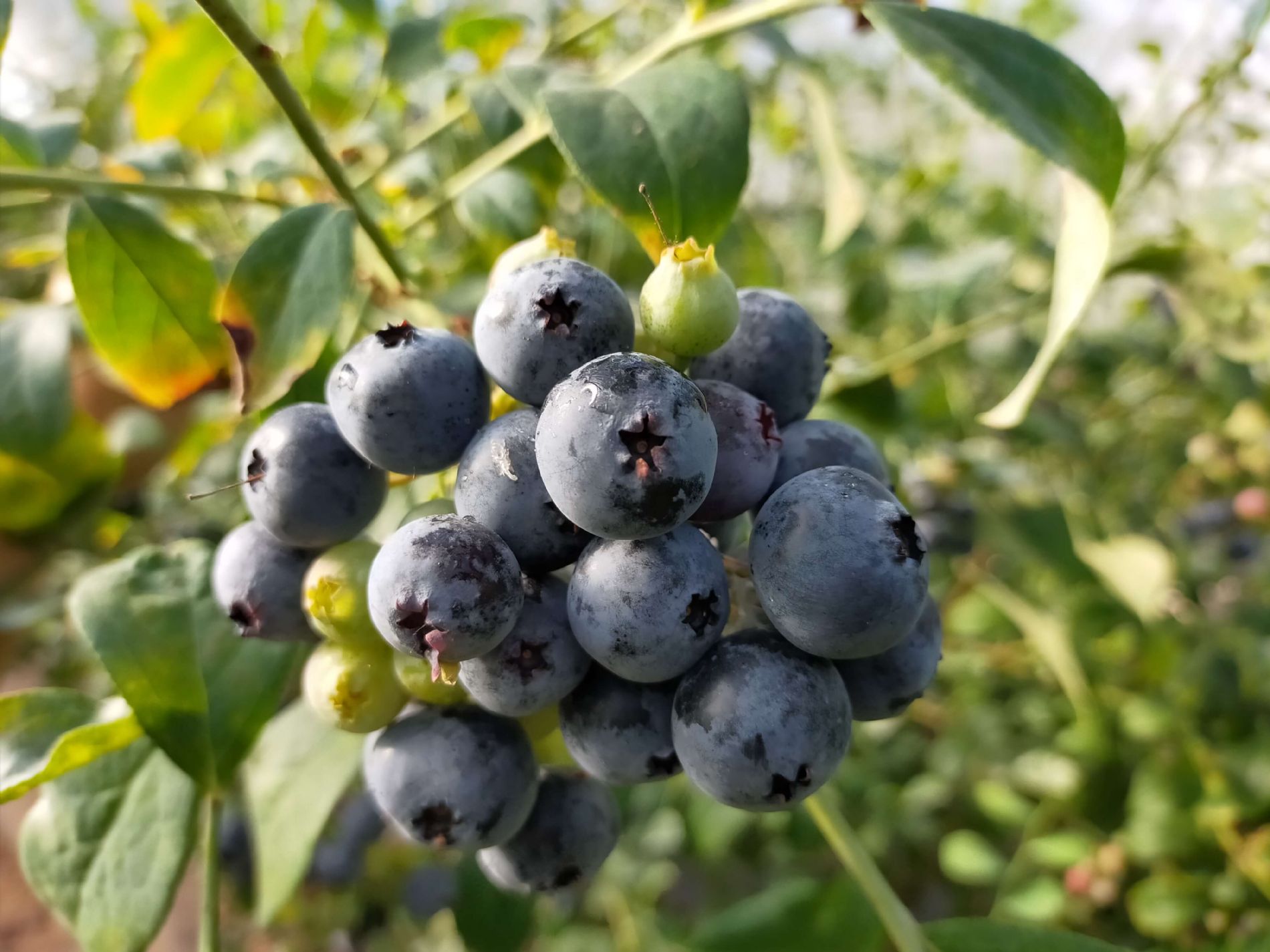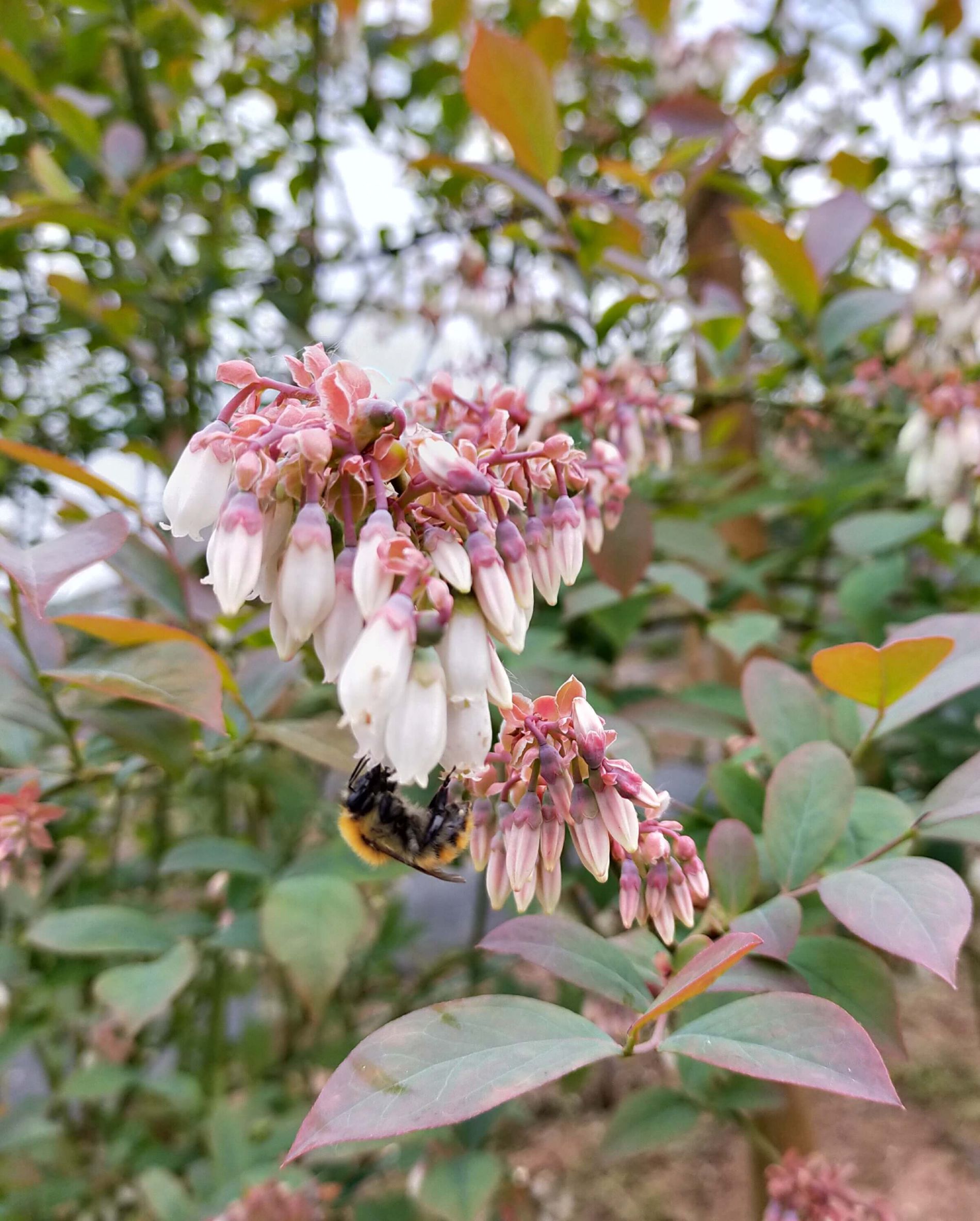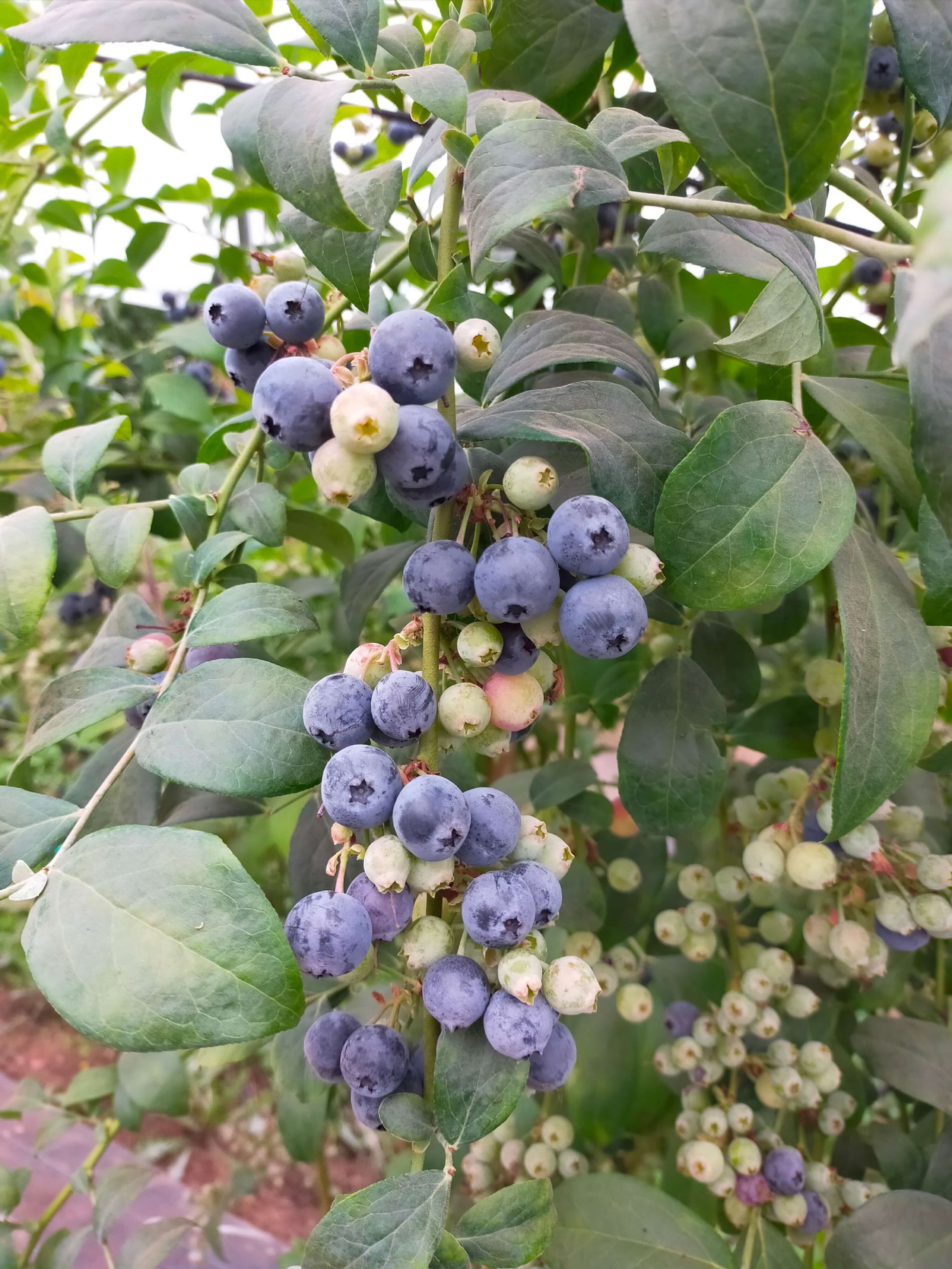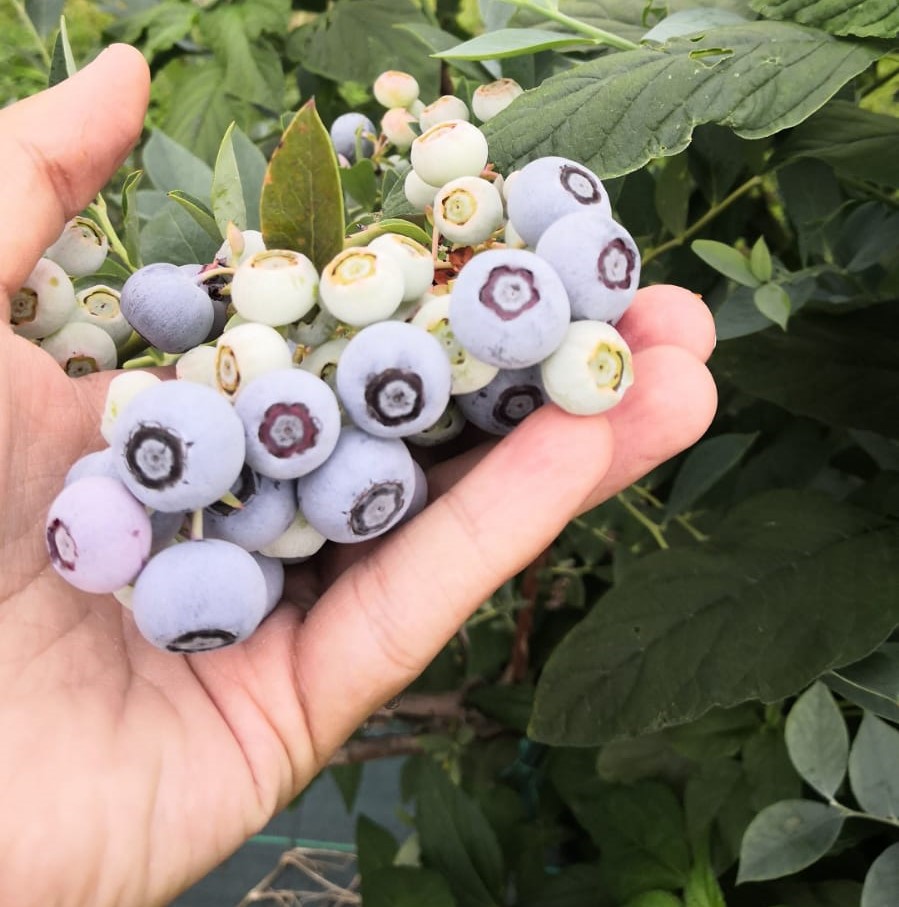
Vaccinium ashei Reade is a genus of blueberry origin from the southeastern United States, concretely the states of California, Georgia, Alabama, Arkansas and Florida.
They are considered “highbush” blueberries, easily exceeding 2 meters in height, reaching their stems even 4 or 5 meters in length. Thanks to their origin they have a greater tolerance to drought; however they are more sensitive to humidity, so an under-plastic crop is recommended.
On the other hand, rabbiteye blueberry varieties have greater tolerance to soils with higher pH, with lower organic matter content and their crop yield is usually higher than that of other genus such as Vaccinium corymbosum. In addition, thanks to their thicker skin they produce really hard-fruits. They have a good size and a better post-harvest conservation.
As we mentioned before, you can cultivate rabbiteye blueberries in a very large climatic area. Its need for cold hours or chill hours, range between 400 -700 h/f, which allows them to be cultivated in many places around the world.
Taking Spain as an example, these varieties can be grown both in the north like Asturias and in the south like Huelva. Furthermore the newest varieties, such as Sky blue, Velluto blue or Centra blue, allow us to extend the harvest as much as possible. Depending on the climatic zone where we are, we will be able to harvest Centra blue blueberries till November. Although, their preferred climates are located between latitudes 35 to 45.
Agronomically, these varieties belong to the genus Vaccinium virgatum, of which a type specimen of this taxon was described in 1789, in Hostus Kewensis (US National Germplasm System). However “blueberry jargon” refers to these varieties as Vaccinium ashei, that's why we mention them in the same way too.
Let's continue!

Traditionally, the older rabbiteye blueberry (Vaccinium ashei) varieties needed a pollinator, because they were partially self-sterile, Ochlockonee, Powderblue or Overtime are some examples of these self-sterile varieties. However, newest varieties such as Centra blue or Velluto blue, they are practically self-fertile and recent researches by SERIDA (regional research service of the Principality of Asturias), link to observation and field-experience, have shown that these new varieties can be cultivate like a one-variety crop without any problem.
As we mentioned before, these plants are larger and tend to elongate their stems to a great extent, that is why they should be planted at a distance of 90 cm to 1 meter and when we reach full harvest it may be necessary to tutor them, to prevent its long stems with the weight of the fruit from falling to the ground.
Rabbiteyes are planted the same as other varieties, normally a ridge covered with anti-weed mesh is made with 2 drippers inside, in this way we have a better distribution of irrigation water. Like all types of blueberry varieties, they need acidic, light and well-drained soils.
Their different genetics means that their fertigation needs (water and fertilizer) are also different. Rabbiteye varieties may need 40% less irrigation water or fertilizer, compared to other varieties of the Vaccinium corymbosum genus.
These varieties have a bigger corolla size than Vaccinium corymbosum varieties, that's why, bumblebees is recommended to pollinate due to rabbiteyes have long-corolla flowers. In addition, bumblebees work in more adverse rainy, cold or windy conditions than bees and thanks to their greater hairiness, they impregnate themselves with pollen when they visit the flowers and are capable of perforating the long-corolla of the flowers to access the pollen more easily. The release of 1,000 bumblebees per hectare is recommended to ensure correct pollination of the crop.

Talking about harvesting, Rabbiteye blueberries are characterized by a very long harvest period, which usually extends 8 to 12 weeks depending on the climatic area. Its long flowering period lasts from 90 to 120 days, and therefore, its flower-to-fruit period is much longer too, compared to other varieties such as Duke.
The Sky blue® or Velluto blue® varieties can start to harvest blueberries as early July and it is the Centra blue® variety that allows us to extend the harvest period to the maximum, being able to harvest the last blueberries in the month of November, although, on these dates, the shorter duration of the days, the lack of sun and worse weather, get a slowly maturation and therefore, we can't make a daily harvest. But on the other hand, we will be producing blueberries out of season, when the price is higher.
Rabbiteye blueberries (Vaccinium ashei) have got a good quality, firmness, good size and they get a very good long post-harvest period. Probably they aren't the sweetest blueberries, but rabbiteye can easily exceed 12 degrees brix and their taste is really good. On the other hand, the rain can tear its skin or lose its characteristic violet color, hence the importance of covering the plants with plastic tunnels, especially in areas with rainy summers and autumns such as Asturias (North of Spain).

Next we will explain in detail the characteristics of each variety:
The newest of the varieties of the Rabbiteye group. Just released variety, coming from New Zealand, where there is a real success. Like all Rabbiteye, it is very robust and resistant; get a very erect bearing and fast growth. Its quality fruit is excellent, similar as Sky blue, but Velluto is much more productive, like Centra blue, making it one of the most productive rabbiteye varieties. Using a pollinator is recommended. (Attached photo).
If you want to extend your period harvest until mid autumn this is your variety. Centra blue is the latest harvest variety, harvesting blueberries even until December depending of the climatic area. It is very productive rabbiteye, get medium/large fruit size, excellent quality and a slightly dark blue color. Harvest period from mid-August to November, Centra blue can be harvested up to 1 month later than other varieties such as Overtime or Titan. Using a pollinator is recommended. Originated from a cross between Raha and Centurion varieties.
In addition, this variety is the perfect complement for your pink blueberry plants, increasing the number of pollinated flowers and therefore the harvest yield.
Very late variety of the rabbiteye group that can be harvest after Aurora. It has got medium vigor and this variety requires heavy pruning in the first years. Sky blue blueberries have got an exquisite fruit, very large and of excellent quality, light blue and crunch. Harvest period from August to end September. Using a pollinator is recommended.
Due to its good harvest yield a very successful variety a decade ago. However currently its lower quality and small fruit size have relegated it to the background, that's why its commercial interest has decreased.
Variety from the genetic program of Fall Creek Genetics®, originally selected as a pollinator. It is a very late harvest period variety. However it can't get a very long harvest period like Centra blue. Sky blue produces blueberries of excellent flavor, light blue in color.
More or less recent variety, from the genetics program of the University of Georgia. It stands out for its large fruit size, probably one of the largest within the Rabbiteye group. These plants are not self-fertile, so it is essential to use a pollinator. It has a moderate cold tolerance, which limits its use to certain climatic areas.
Developed and written by Adrián García Villar, Agricultural Engineer from Polytechnic University of Madrid (UPM). Number Collegiate 215, Official College of Agricultural Engineers of the Principality of Asturias (COIASTUR).
